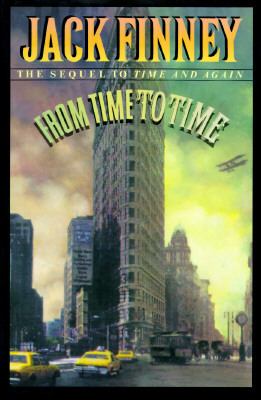Mediocre sequels
Jack Finney's novel Time And Again is a marvelous read with a unique plot told in an engaging first-person narrative. Simon Morely, an artist working in advertising in New York City, meets a U.S. Army officer named Ruben Prien. Prien tells Morely all about a unique project he is working on related to time travel, one done via hypnosis. Intrigued, Morely thinks it over and decides to take part.
From a room at the fabled Dakota Apartment building, Morely slowly but surely begins to dissolve time's barriers and freely visit the New York City of the 1880s. As the plot thickens, Prien's group ultimately wants Morely to do something that would change history. Not wishing to do so, he instead tweaks the meeting of the father and mother of the group's developer to ensure they never met and he was never born. After that, he returns to the boarding house where he has met a girl he now loves named Julia.
Time And Again came out in 1970. Fast-forward to 1995 when a sequel, From Time To Time posthumously appeared after Finney's death. It does not open right away with Simon Morely as the first did, however. Instead, we are at a meeting (narrated in the third-person) where people discuss -and present evidence of- alternate historical timelines. The most mind-twisting of which is one in which World War I never happened.
Only after that does Morely appear narrating his new life in 1880s New York City. Happily married to Julia with a four year-old son, all is bliss for him. Then the novel jumps back to the third-person as we again meet Ruben Prien who still remembers the special project from the first novel thanks to the sci-fi writer's handy refuge of "residual memories." My, aren't we original?
Soon another time-travel operative makes contact with Prien, who remembers Morely at last and directs the agent to thwart Morely's past prevention of the project. From there on, Prien becomes obsessed with stopping World War I after discovering papers that, if delivered to the United States in 1912, would have done so. Morely gets tapped (apparently without any angst over the project having come back!) and soon it is off to the New York City of the Edwardian era for him. But by then the reader hardly cares because the magic and mystery of the first book is not present. Even a plot twist that puts Morely on the doomed Royal Mail Steamer Titanic falls flat.
That was my experience with an awesome book that had a mediocre sequel. Has anybody ever had a similar experience?
Article image courtesy Hennepin County Library.
